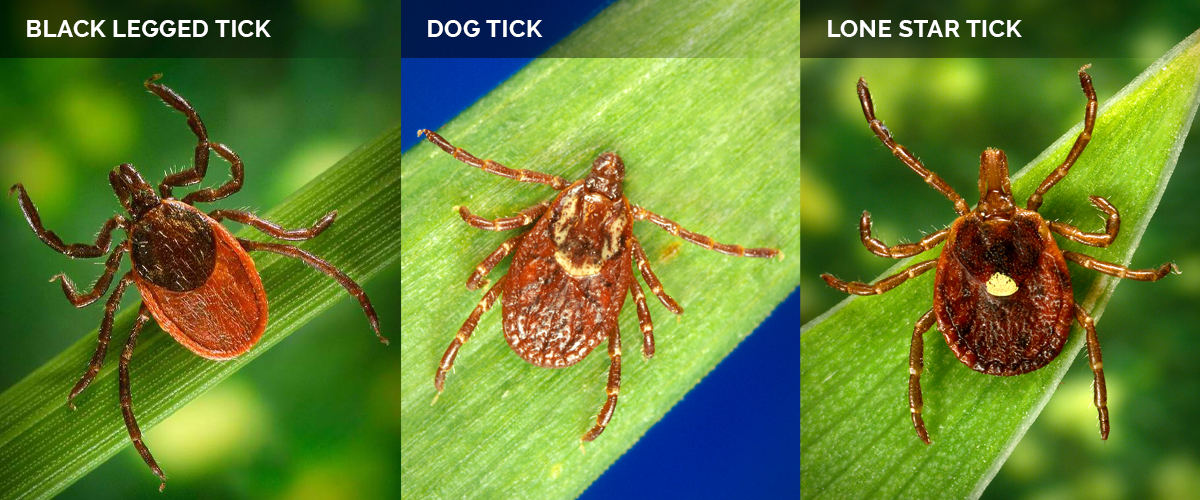A Guide to Preventing Tick Bites
Experts share the steps to take to protect yourself from tick bites and what to do if you’ve been bitten.

Whether you’re taking your dog on a hike, picnicking with your friends and family, or working on your garden, being outside is one of the joys of warmer weather — but it also comes with an increased risk of tick bites.
If it feels like ticks are more prevalent than ever, and tick season is longer, it’s true. Ticks thrive in warmer, more humid environments, and rising temperatures have likely played a role in the expansion of certain tick species into new geographic areas. The northeast is now home to three main species of ticks: the blacklegged tick, the deer tick, and the lone star tick.
Dr. Brian Fallon, director of Columbia’s Lyme and Tick-Borne Diseases Research Center and a psychiatrist with NewYork-Presbyterian/Columbia University Irving Medical Center, and Dr. Rafal Tokarz, assistant professor of epidemiology at the Center for Infection and Immunity at Columbia University’s Mailman School of Public Health, shares what you need to know about ticks and offer practical tips to prevent tick bites all year round.
Pause for Regular Tick Checks
Any time you’re outdoors, it’s a good idea to set an alarm as a reminder to regularly pause and make sure you don’t have ticks on your clothes or your pet doesn’t have any on their fur. If you do find ticks on clothes or fur, you can pick them off with tweezers, brush them off, or use something sticky like a lint roller. A lint roller may also pick up ticks in their smaller larval or nymph stages, which are easy to overlook. Tick nymphs are only about the size of a poppy seed and dark brown, making them very difficult to see.
Wearing light colored clothing, long sleeves and tucking your pant legs into your socks will help keep ticks from biting your skin, but you should still always stop to check yourself and remove ticks before they bite.
Avoid Leaf Foliage or High Grass and Use Insect Repellent
Ticks will usually live on leaves or blades of grass and grab onto whatever warm-blooded mammal brushes by. If you plan on being in a wooded, leafy area, spray your clothes ahead of time with permethrin. For your skin, using repellent that contain 20 to 30 percent of either DEET or picaridin, or repellent containing 30 percent of oil of lemon eucalyptus.
Ticks like dark, humid spaces so a cut lawn that gets lots of sun or shrubbery that’s nicely trimmed can reduce the number of ticks. If you are picnicking in a park, pick a patch of grass away from the edges, where taller grass or weeds may be more abundant. If you are on a hike, stay on the path and try to avoid stepping into areas with lots of leaves and overgrowth.
Be Aware of Tick Populations
Until recently, the lone star tick was primarily found in the South. Climate change and rising temperatures have helped this tick expand its geographic range and is now one of the predominant species found in the Northeast, along with the black-legged tick and the dog tick. The black-legged tick, in turn, is expanding its reach north into Canada.
The lone star tick is an aggressive hunter, moving about three times faster than the black-legged tick, which may also explain why it’s been so successful at adapting to a new environment. Distinguishing between each tick with the naked eye is challenging, but knowing which ones are predominant in the area is helpful if you have been bitten.
Each species carries microbes that can lead to a variety of diseases and syndromes, such Lyme Disease, babesiosis, Rocky Mountain spotted fever, or alpha-gal syndrome (which causes an allergic reaction to red meat).
After Being Outside, Do a Thorough Tick Check
Here are a few places to check for ticks:
- Hair
- Ears
- Underarms
- Groin
- Waist
- Behind your knees
- Belly button
Putting clothes in the washer and dryer will kill ticks And don’t forget to perform a tick check on any pets, too, if they’ve explored areas where ticks are prevalent.

When Using Tweezers to Remove Ticks, Be Gentle
To remove a tick, use tweezers to pull upward with steady, even pressure. Don’t twist or jerk the tick, and don’t use petroleum jelly or a match to burn it off. Once you have removed the tick, thoroughly clean the bite area and your hands with rubbing alcohol or soap and water.
The black-legged tick, the species that carries the microbe that causes Lyme, is the most common tick in New York State. If it’s removed within 24 hours, you substantially reduce the risk of acquiring Lyme disease. In most cases, the tick must be attached for 36 to 48 hours or more before the Lyme disease bacterium can be transmitted. If the tick was on longer than 36 hours or if you feel sick after a tick bite of a shorter duration, it’s a good idea to see a doctor.
What to Know about Lyme Disease
Symptoms
Lyme disease is the most common disease spread by ticks in New York, but it doesn’t always present with an easily identifiable rash with a bulls-eye shape in the middle. More often it’s a solid rash that starts small and expands in size over a few days. There might also be no rash at all, or there may be multiple rashes. Also, be on the lookout for viral-like symptoms, such as a fever, stiff muscles, fatigue, and painful joints.
How to Treat Lyme Disease
Lyme disease is rarely fatal, but it can be if it affects the heart. Most often a doctor will prescribe common antibiotics, like doxycycline or amoxicillin, and a vast majority of the time a person will recover fully. Some people have an immune system strong enough to kill the bacteria without antibiotics, meaning even though they are infected, they will not show symptoms. But if you suspect you may have Lyme disease, it’s best to seek medical attention.
Be Aware of the Symptoms of the Diseases Other Ticks Carry
The lone star tick may carry the microbes that cause ehrlichiosis, which manifests most often as a viral -like illness, with fever, chills, severe headaches, nausea, confusion, and muscle pains; unlike a virus, it should be treated with the antibiotic doxycycline. The lone star tick may also carry a substance called alpha-gal that, after a bite, triggers a delayed allergic reaction to red meat (but not to chicken or fish).
The dog tick, much larger than the black-legged tick, carries microbes that cause tularemia and Rocky Mountain spotted fever. The rash associated with Rocky Mountain spotted fever typically starts on the hands and feet; early recognition and treatment with antibiotics is needed to avoid dangerous and sometimes deadly complications. Tularemia is a much rarer but serious disease characterized by fever, enlarged and painful liver and spleen, and often a skin ulcer.
